Rotis are unleavened flatbreads that have captured the hearts and palates of people across the Asian continent. Two popular renditions of this delectable dish are Roti prata and Roti canai.
After TasteAtlas released the ranking of the world’s best breads, in which Malaysian roti canai takes the first position (rating 4.9), and Singaporean roti prata ranks twelfth (4.6), many laughed, claiming that it’s the same dish. Even Wikipedia claims so! Well, it’s not.
Although they may appear quite similar at first glance, these culinary delights have their own unique identities, stemming from their distinct origins and preparation methods.
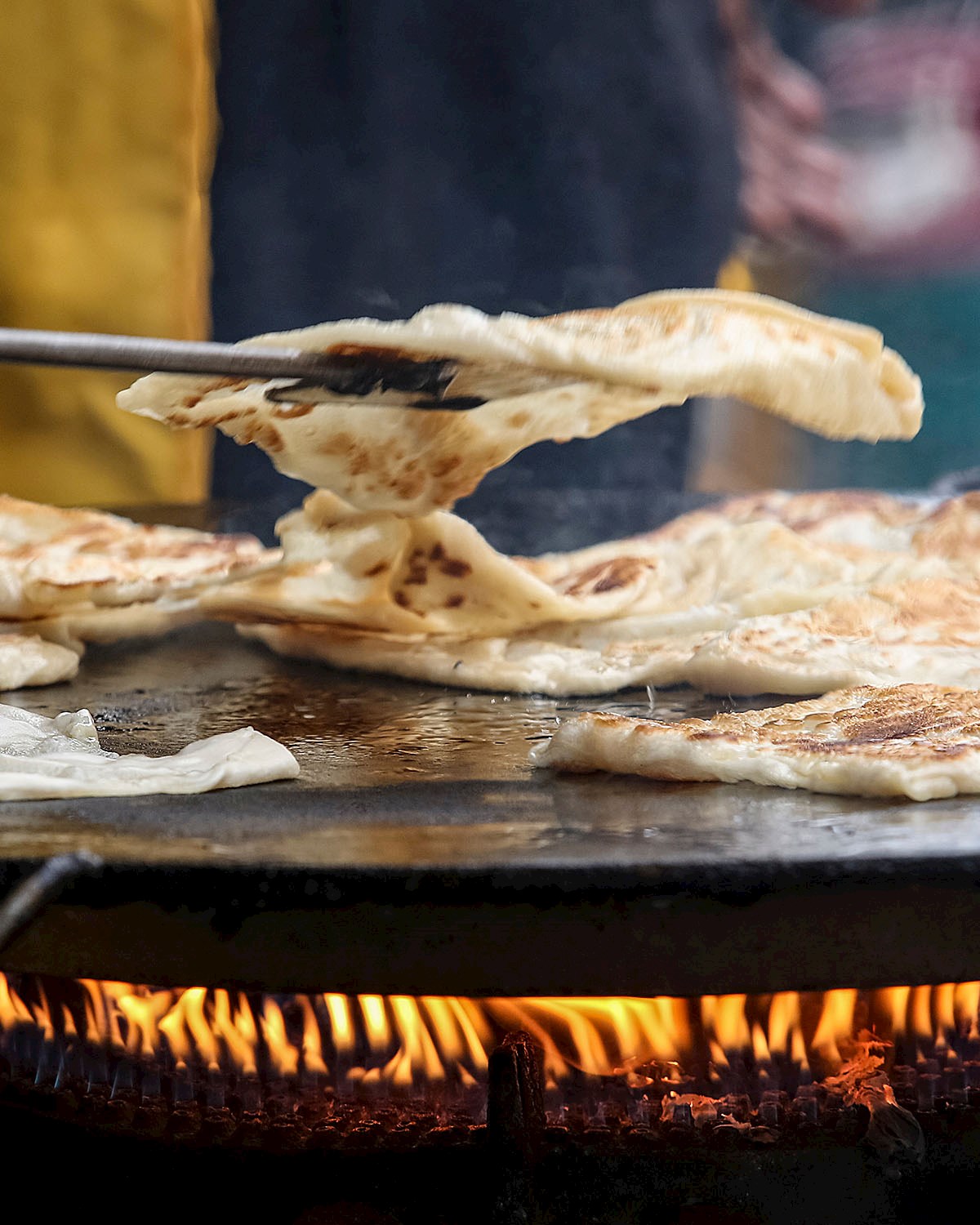 Credits: shutterstock
Credits: shutterstock
Origin
Roti prata and roti canai both trace their roots back to the Indian subcontinent. Both dishes have their origins in the Indian paratha, a versatile and beloved flatbread. Paratha, a term derived from the Sanskrit words “parat” meaning layers and “atta” referring to wheat flour, is a versatile bread that finds its roots in North India.
Indian parathas are typically made by layering and folding the dough multiple times, resulting in a flaky and crisp texture when cooked. It is this very foundation that provides the base for both roti prata and roti canai.
Malaysians, similar to Indians, use the term “roti” as a blanket term for various types of bread, owing to its shared meaning in Sanskrit. The origins of “canai” are a matter of debate: some attribute it to Chennai, while others suggest it originates from the Malay term meaning “to knead.” There is also speculation that it may have derived from “chana,” the North Indian dish featuring chickpeas in gravy, often paired with a similar style of bread. While roti canai is often likened to the paratha, it’s worth noting that this delectable dish is not found in India, even though it bears a resemblance to the Malabar parotta.
The name “roti prata” is believed to have originated from two languages. “Roti” is a term of Indian origin, derived from Sanskrit, and it broadly refers to bread or flatbread. “Prata” is a Malay word that means “flat” or “thin.” When combined, “roti prata” essentially means “flatbread” or “thin bread.”
While many people use the names interchangeably, they are distinct dishes with differences in preparation, taste, and presentation.
Roti canai: Malaysia’s beloved creation
Roti canai, often simply referred to as “canai” in Malaysia, is a beloved staple of Malaysian cuisine. It is believed to have been introduced to Malaysia by Indian Muslim immigrants who adapted the original paratha to suit local tastes. What sets roti canai apart is its unique preparation method. The dough is kneaded with ghee (clarified butter), resulting in a soft, stretchy texture. The dough is then flattened, folded, and fried to achieve a crispy exterior and a soft, flaky interior. Roti canai is typically served with a variety of curries, making it a popular breakfast or anytime snack in Malaysia.
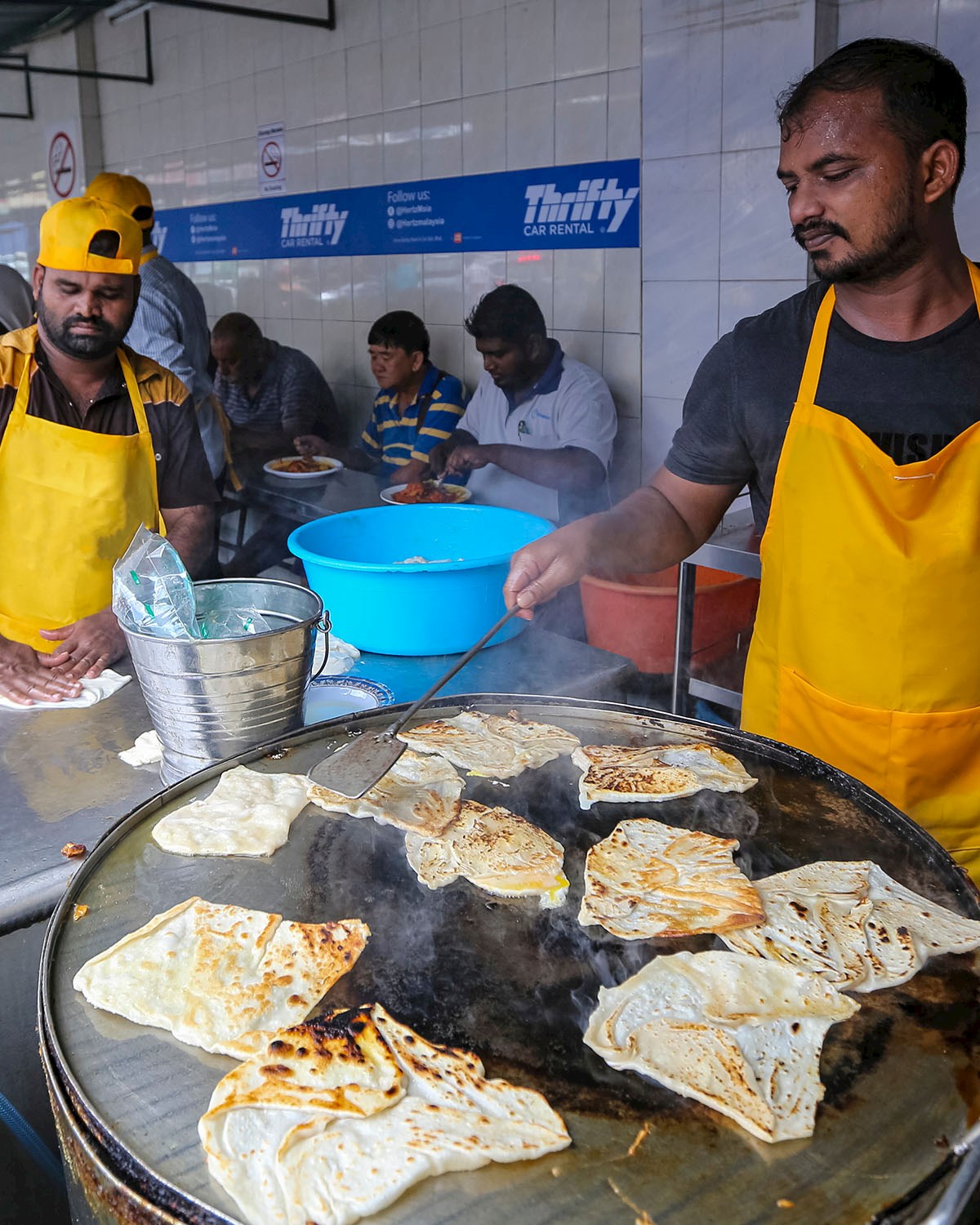 Credits: shutterstock
Credits: shutterstock
Roti prata: Singapore’s take on Indian paratha
In Singapore, you’ll find a similar yet distinct dish known as roti prata. Singapore’s roti prata shares its roots with roti canai but has developed its own identity over time. The key difference lies in the preparation and texture. Roti prata dough is typically made with a combination of flour, water, sugar, and condensed milk. This results in a slightly sweet taste and a denser, chewier texture compared to roti canai. Roti prata is also known for its paper-thin layers, achieved through skillful stretching and tossing of the dough. It is often served with a variety of savory and sweet accompaniments, making it a versatile choice for breakfast, lunch, or supper.
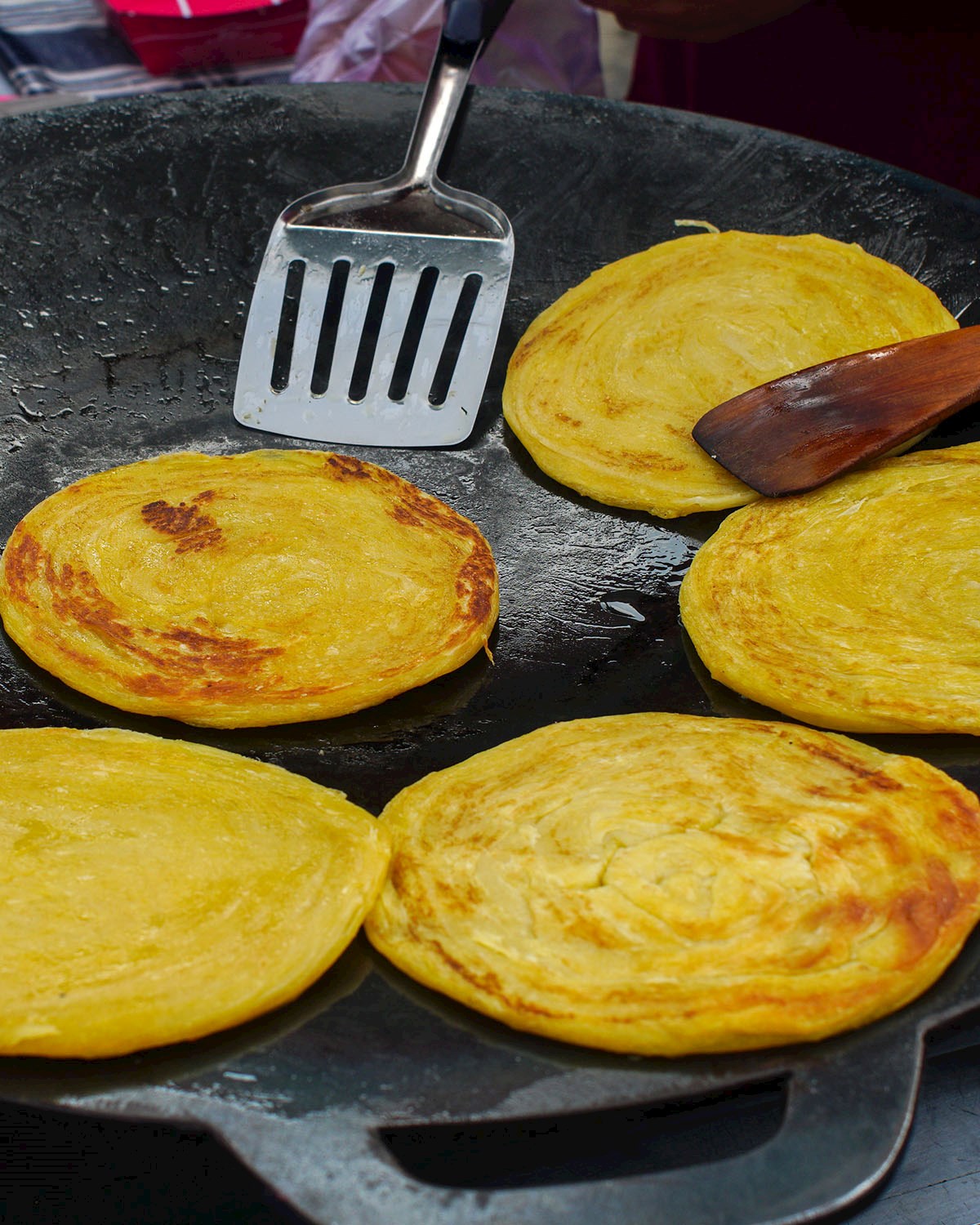 Credits: shutterstock
Credits: shutterstock
Main differences
• Texture: The primary difference between roti prata and roti canai is their texture. Roti canai has a softer, flaky interior with a crispy exterior, whereas roti prata has a denser, chewier texture with paper-thin layers.
• Ingredients: Roti canai uses ghee in its dough, giving it a distinct flavor, while roti prata includes condensed milk and sugar, contributing to its slightly sweet taste.
• Serving styles: Roti canai is often served with various curries, while roti prata pairs well with both savory and sweet accompaniments, such as dhal (lentil curry) or sugar.
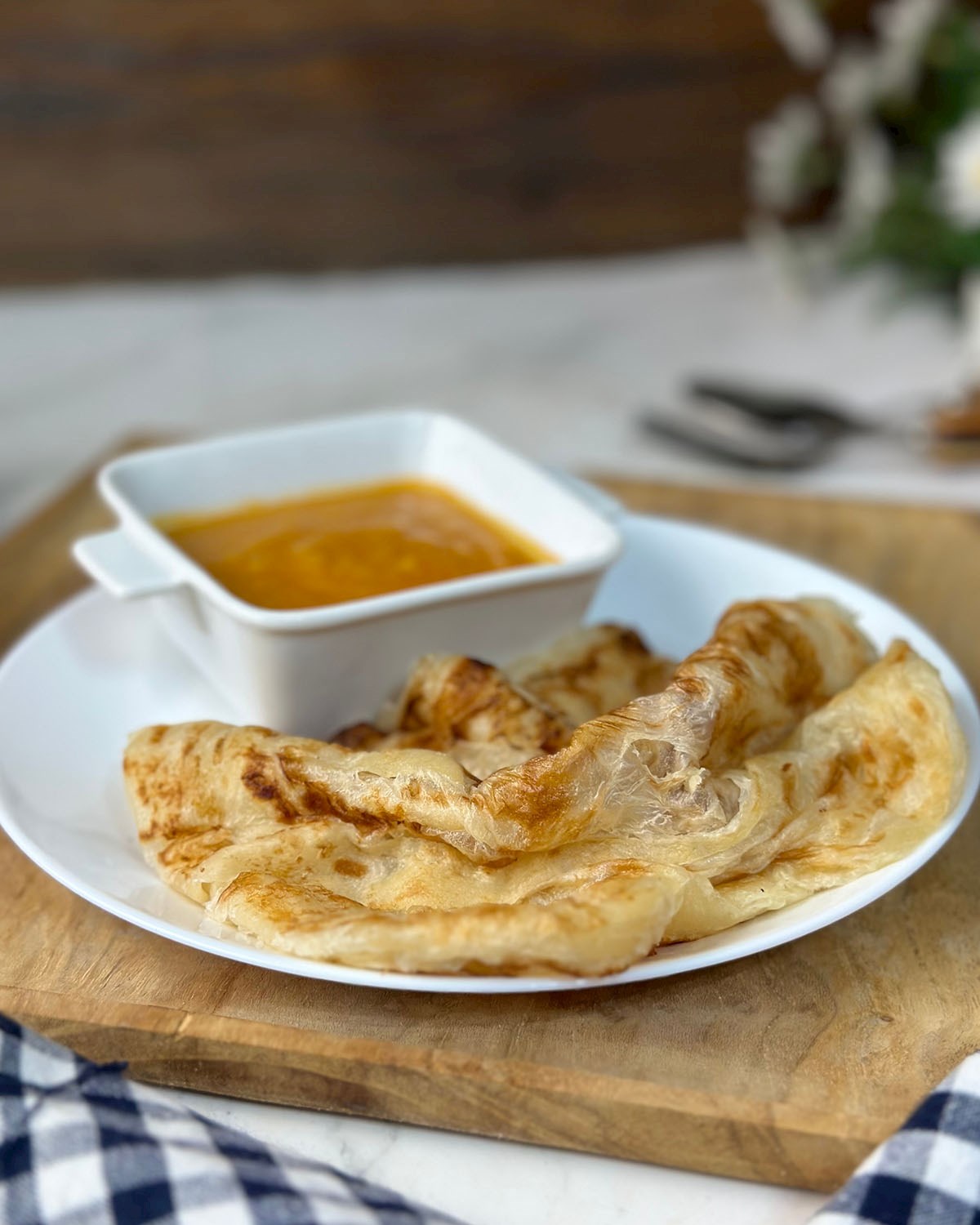 Roti canai with curry Credits: shutterstock
Roti canai with curry Credits: shutterstock
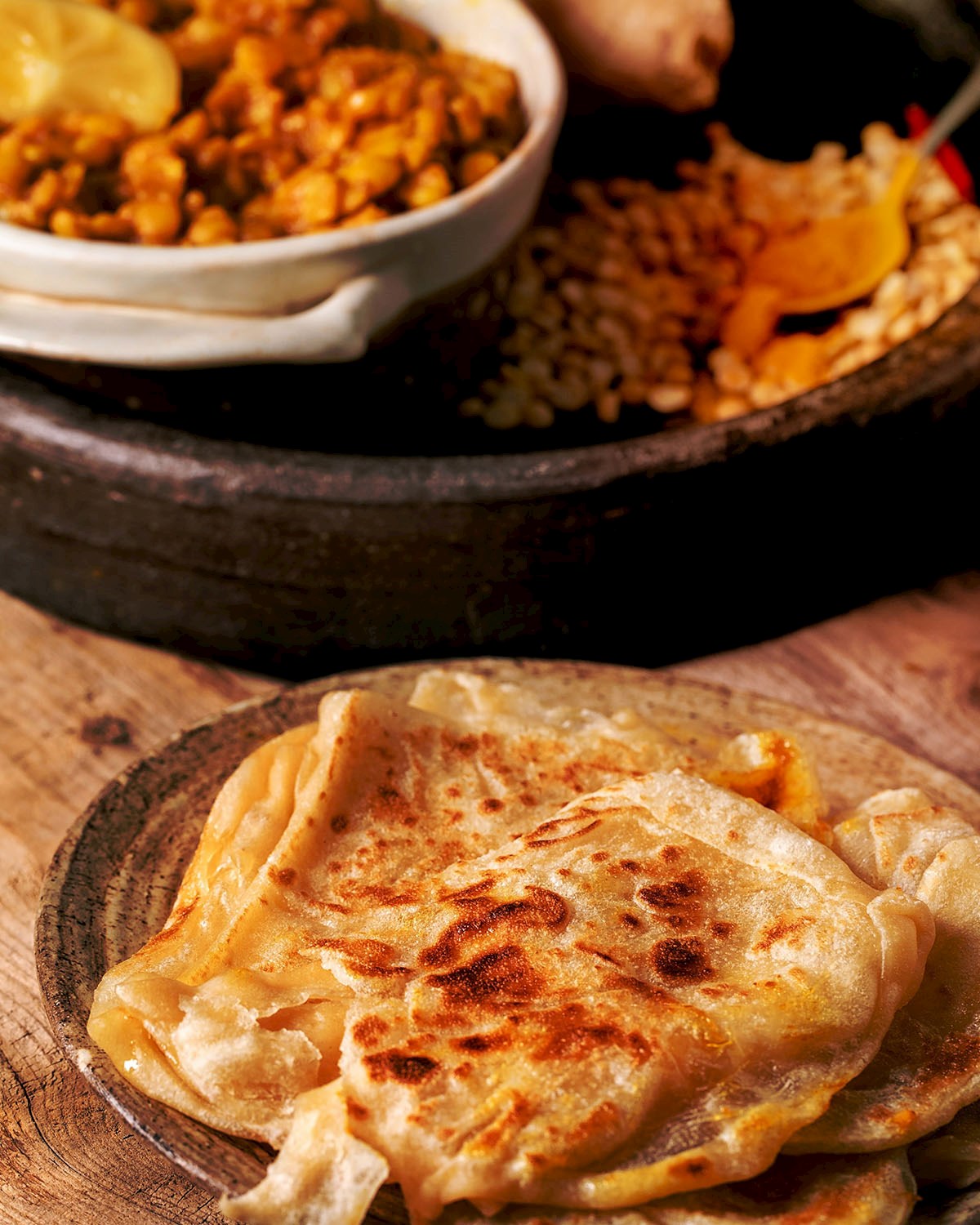 Roti prata with dhal Credits: shutterstock
Roti prata with dhal Credits: shutterstock
Roti prata and roti canai are two delightful variations of the Indian paratha, each with its own unique twist. While they share common roots, the differences in preparation, texture, and taste set them apart, making them beloved dishes in their respective regions of Singapore and Malaysia.
Best rated Breads in the world



